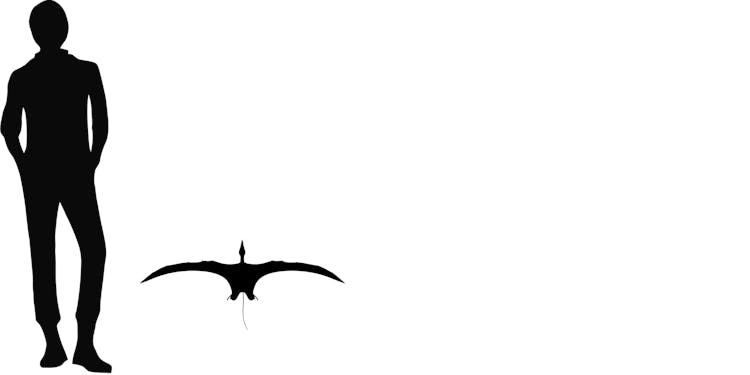


Campylognathoides is a rather old find. Like many other pterosaur fossils from the 19th Century it was classified as a member of the genus Pterodactylus. Pterodactylus was the ultimate wastebasket taxon, having a mix of varied animals from all over Europe. The type species of Campylognathoides, C. zitteli was once called Pterodactylus liasicus. The animal lived over 180 million years ago during the Toarcian Stage of the Jurassic. Its discovery dates back to 1858, when the fossils remains were pulled out of Early Jurassic rocks of the Posidonia Shale of Baden-Wurttemburg, Germany.
It was certainly unlike Pterodacylus though. Campylognathoides was a non-pterodacyloid pterosaur with a lengthy tail. It was given the name Campylognathus in 1894 but it was soon realized that this had been used for an African bug somewhat earlier. The name Campylognathoides was only given to it in 1928. There is also another species in the genus called "C. liasicus". A third species was created in 1974 by Sohan Lal Jain, based on very fragmentary remains in India. It is a dubious species and is not regarded as valid.
Campylognathoides' environment was located somewhere close to the sea. The Posidonia Shale is a marine formation that preserves a rather shallow sea full of the traditional fare of fish. There were also varied ammonites and belemnites – shelled relatives of squid – while the biggest predators were huge marine reptiles. It shared its home with another pterosaur, Dorygnathus.
Unlike the fish-eating Dorygnathus though, Campylognathoides was far more varied in its diet. The two species were radically different from one another. C. zitteli had a 1.8-meter wingspan while C. liasicus was half the size. The former also had longer wings in proportion to the latter.
Their skulls were shorter than that of Dorygnathus. Also according to paleontologist Kevin Padian, Campylognathoides had stouter and stronger teeth that were suited to deliver a powerful bite. They may have hunted overland, possibly tackling both small vertebrates and large insects.
